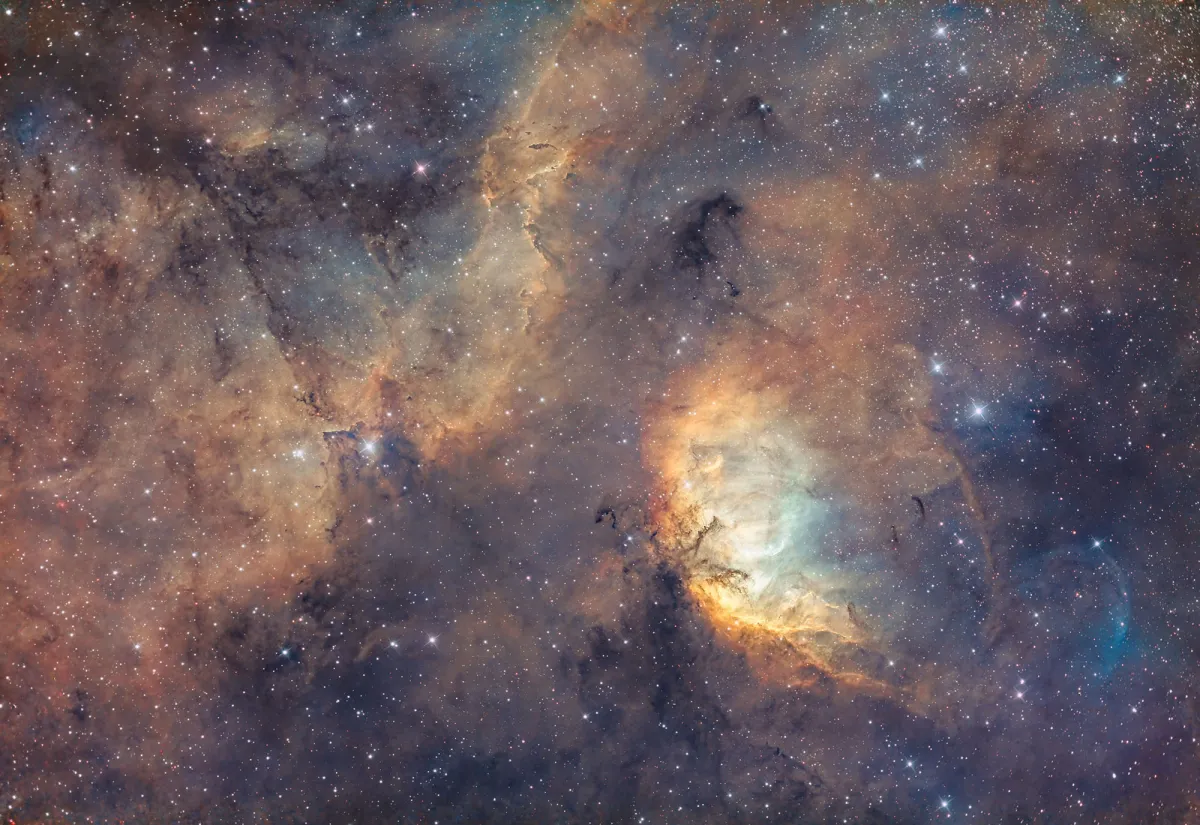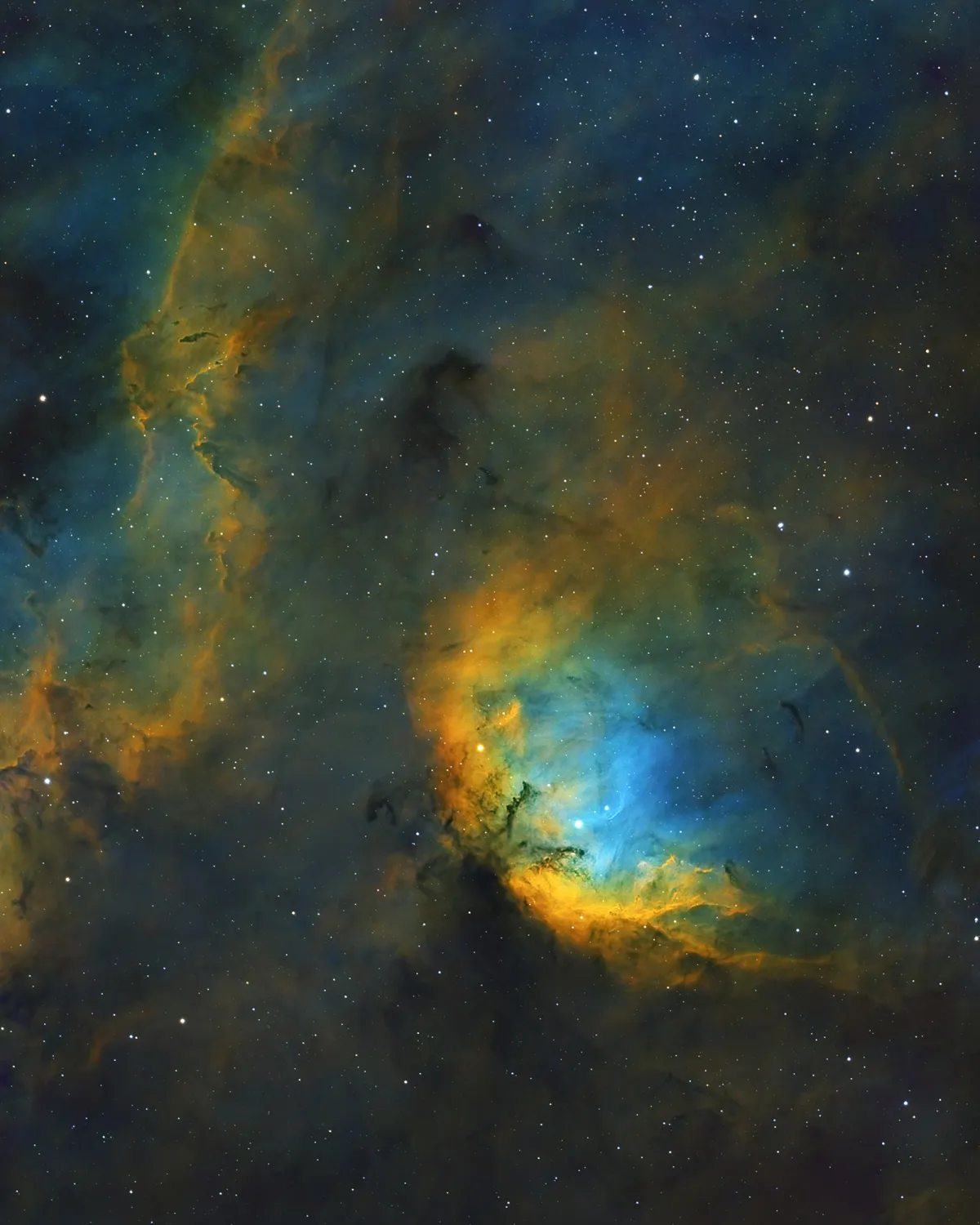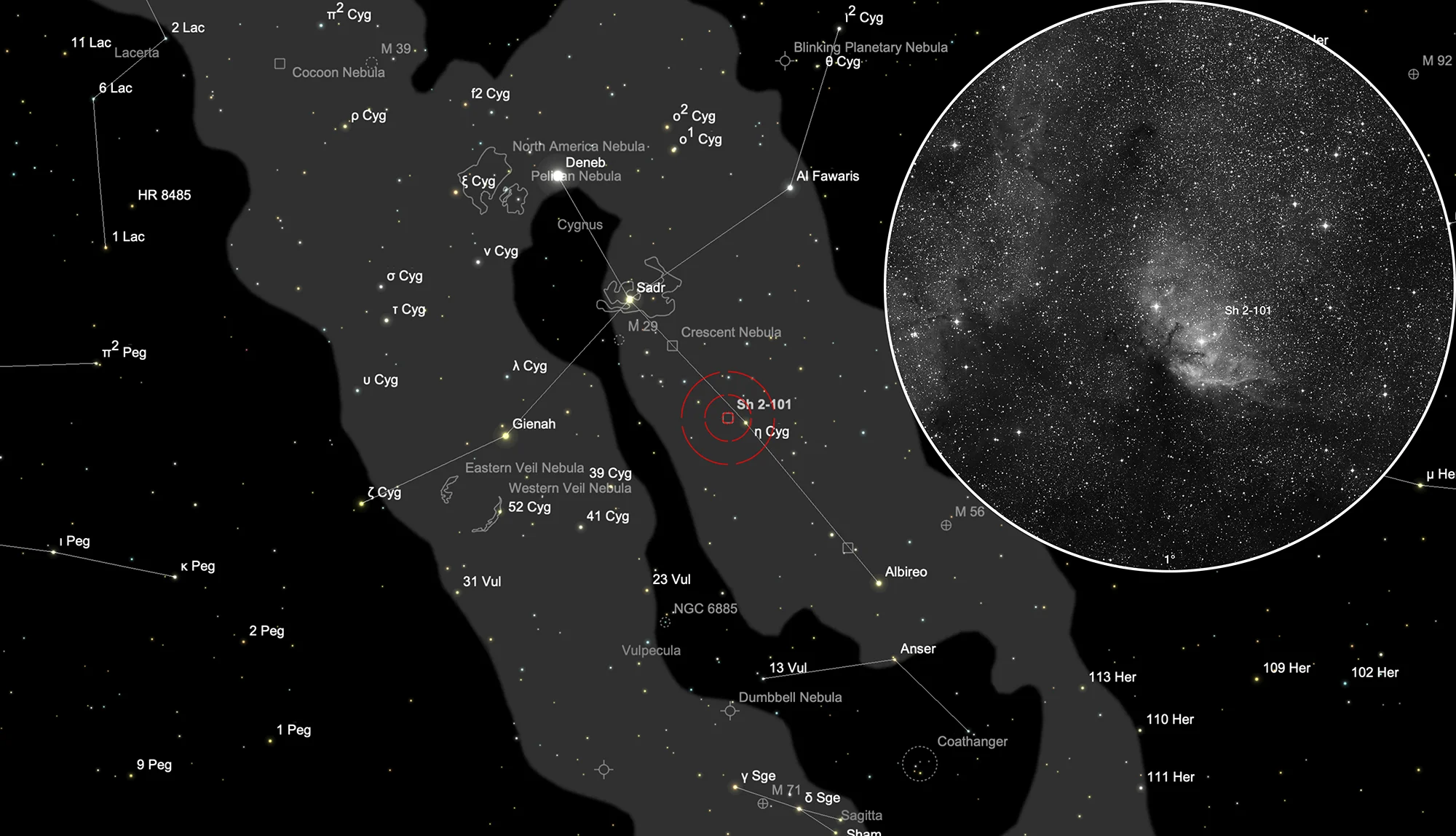Tulip Nebula (Cederblad 173, Sh 2-101)


History
In 1946 the Swedish astronomer Sven Cederblad published a study of bright diffuse galactic nebulae where he listed this nebula as Cederblad 173. He noted: «BD +34°3828 nebulous. Source: (93 Pl 43). WP 154. (715). R. The star responsible for the nebular light is stated to be BD +34°3828 (93). Then, BD +34°3830 = HD 189688 (spectrum K5) would only be aligned with the nebula.» [130]
In 1953 the American astronomer Stewart Sharpless published his first survey for H II regions on the 48 inch Schmidt telescope photo plates of the «Palomar Observatory Sky Survey». This nebula was listed as Sh 1-75. [309] In 1959 he published a revised and extended version of his survey and listed this nebula as Sh 2-101. [310]
In 1955 the Russian astronomers Grigory Abramovich Shajn and Vera Fedorovna Gaze at the Simeis Observatory on the Crimean Peninsula published their Gaze-Shajn catalogue of emission nebula. Cederblad 173 was there listed as Gaze-Shajn 175. [402]
In Beverly Lynds «Catalogue of Bright Nebulae», which was published in 1965, this nebula is listed as LBN 71.58+02.86. Because it was the 168th entry in the list, the nebula is also referred to as LBN 168. [270]
As the nebula appears in photographs like the bloom of a tulip, it earned the nickname «Tulip Nebula.»
Physical Properties
Finder Chart
The nebula Sh 2-101 is located in the constellation Cygnus. On 21 July it is in opposition to the Sun and culminates at local midnight. The best time for observation is from March to December.
